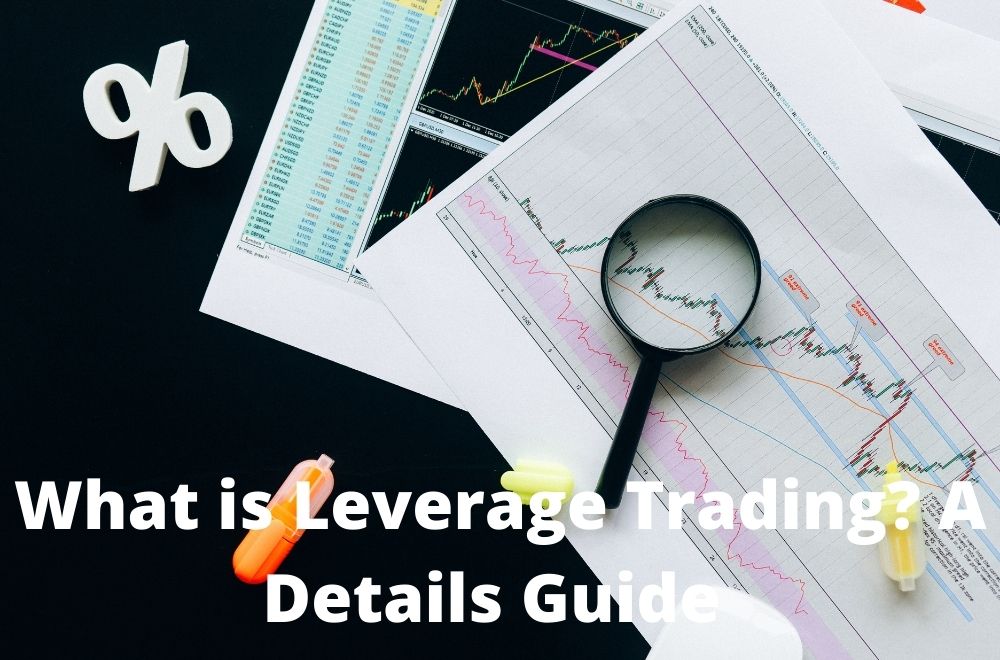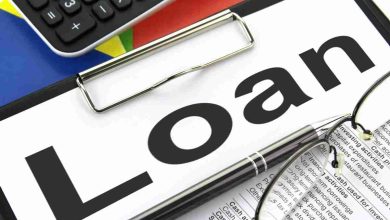What is Leverage Trading? A Details Guide

Leverage means borrowing a specific amount of money that is needed for investment.
Leveraged trading allows traders to open large deals with a relatively small investment, thus maximizing trading power, including risk. Because when traders use high leverage, both successful and unsuccessful deals are amplified.
For example, A Trader invests $200 in a famous currency pair; EUR/USD. With a maximum leverage of 400:1, he/ she can open a deal worth 800 times of opening investment, which is $80,000. It simply means that a trader will get a dollar of 400 as a trading power for each dollar.
- Leverage is a crucial characteristic of CFD trading.
- It is a powerful tool for a trader.
- Leverage enables traders to take advantage of the small price movements.
- It gears traders portfolios for greater exposure or to make capital go further.
How does leverage work?
Leverage works on the deposit made, which is known as margin. It provides traders with increased exposure to an underlying asset.
It is the embedding of a fraction of the full value of trade.
Types of leveraged products
There are different type of leveraged product a broker provides to the traders. A trader can trade an instrument that takes its value from the underlying asset’s price rather than owning the asset itself.
The main leveraged products are:
Spread betting
It is applicable in the united kingdom. Spread betting work according to the direction in which a market will move, and according to the move, they earn more profit.
The traders benefit from the market, which moves in traders chosen direction, which increases the chances of making a profit.
Contracts for difference (CFDs)
It is a settlement between a trader and a broker to exchange the product at the difference in the price of a financial product between the time the position is opened and closed.
The leveraged products available are, such as options, futures and some exchange-traded funds (ETFs). Though all these work in different ways/ directions, they can increase profits, and there are always chances of losses.
Which markets allows usage of leverage?
Leverage involves a high risk of losing money in the financial market. Leverage can be applied when trading stocks, currencies, ETFs, commodities and indices, and cryptocurrencies. Each instrument has maximum leverage limitations, guided by industry regulations and the rules and regulation of broker trading. Traders can mitigate the risks of trading with high leverage. What does leverage mean in forex? Click to find out.
Pros of using leverage
- Magnified profits. Under this, The investor put down a fraction of their trade value to receive the same profit as normal trade. Here, profits are calculated by applying the full value of traders’ position. Through leverage, the chances of the investors’ return on the investment increases, which offers them magnified profits.
- Gearing opportunities. With the leverages in the trading, traders can free up their capital as they are offered an opportunity to earn profit through investment in high leverages. The capability to increase the amount available for investment is gearing. The leverages tool enables investors with a great opportunity.
- Shortlisting the trading market. With leveraged products, traders can gamble on market movements that benefit them from falling and rising markets.
- 24-hour dealing. However, the timings of the trading depend upon the market to market. But it allows trading 24 hours a day. Trading with leverage increases the chances of the traders in the market to earn more profits.
Cons of using leverage
- Magnified losses. Margins magnify losses and profits, and because initial expenditure is comparatively smaller than conventional trades, investors forget the amount of capital traders are placing at risk. So traders should always consider trade-in terms of its full value and downside potential. They should take steps to manage risk.
- No shareholder privileges. Trading with leverage doesn’t give traders the benefit of taking ownership of the asset. Traders, when using leveraged products, have implications on payments. Instead of receiving that, their amount will usually be added or subtracted from the account, depending on whether the traders position is long or short.
- Margin calls. Trading with leverages involves a high risk of losing capital if the trader’s position moves against them. The broker asked them to embed an additional amount to keep trade open in the market. Such an additional amount is known as a margin call; under such a situation trader, require to add capital or have to exit their positions which reduce their total exposure in the market.
- Funding charges. To keep their position open in the market overnight, the traders are charged a fee to do so. When using leverage, traders can effectively lend the money to open the full position at the cost of your deposit.
Risks of leverage
Risk is one of the most critical factors associated with leverages. Risk is essential in trading. But, leverage can cause both magnified profits and losses. The leverage ratio should be determined in advance of trading.
Doubling risk on one investment could profit merchants if they happen to get that one trade right. But when they get it wrong, a trader could face a much larger loss than usual. To help reduce risks in trading, an investor should plan out their trading strategy in advance.
Two factors traders should consider when they are determining how much amount of leverage they should apply to their portfolio:
- Traders should decide about the risk they want to take per trade and per day. They should examine this through percentage. First, a trader should determine how much risk they are willing to take per day. This includes determining the highest cost that they are ready to lose. This could, for example, be within 2% and 3%. Suppose a trader use 2% as maximum regular risk, it would take 50 days of inferior losing trades in a row to clear out their capital, which is probably unlikely to happen in reality.
- A trader should also ascertain how many trades he/she want to place per day. They should set this in the maximum number. A trader should decide about a maximum of trades a day, whatever the market. In each instance, the trader should split the percentage they are ready to risk per day by this split number.
Risk management strategies
Leveraged trading is risky as losses may exceed expenditure, but traders, with the help of the risk-management tools, can reduce possible loss:
Stops
Stops help the traders to restrict their losses if a price moves against them. They should always keep in mind that the market moves quickly, and they should know that certain conditions in the market may result in traders stop not being triggered at the price they have set.
Guaranteed stops
A guaranteed stop is a stop that guarantees that traders position is always closed at their pre-selected price. It is a famous risk management tool applied to protect trades from avoidable losses during periods of volatilisation.
Limited-risk account
These accounts help traders protect their position in the market, and they can ensure that their positions have a guaranteed stop or are on essentially limited-risk markets.
Through using ‘stops’ as a tool to reduce the chances of the risk. It is a popular way to control the risk of leverage, but there are many other tools available that traders can use, such as– price alerts and limit orders.
What is the leverage ratio?
A leverage ratio is an estimation of a trade’s total exposure compared to its margin requirement. Leverage ratio varies, depending on the market traders are trading, who they are trading it with, and the size of their position.
The leverage work on two conditions in the market. The more unpredictable or less liquid the underlying market will be, the lower the leverage will be to protect traders position from rapid price movements. On the other hand, extremely liquid markets will have incredibly high leverage ratios.
The different degrees of leverage has a different effect on trader exposure and, consequently, on profit potential and maximum loss.
What is Margin Trading?
Margin Trading is the amount of money a broker allows a trader to put down to trade in a much bigger position in the market. It is basically a security deposit held by the broker. When holding trading positions, price changes in the market will lead to changing margin conditions as well. On most platforms, information on the varying margin conditions will be displayed in your trading account.
Account Balance
The account balance is the total amount that is available in the trader’s account as trading capital. It is actually a trading bankroll.
Margin Requirement
It is a security deposit to the broker to control trade in the market. It is expressed in terms of the percentage.
For instance, if a trader uses a leverage level of 100:1, their margin requirement will be 2%. If they use the leverage of 400:1, their margin requirement will be 0.25%.
Used Margin
This is the amount of money held as a ‘security’ by a broker so that traders can keep their trade position open and running. The money is still theoretically of traders, but they can only access it after the open positions are closed.
Usable Margin
This is the money available in the trader’s trading account for opening new trade positions in the financial market.
Margin Call
A margin call is a warning to the traders by their broker regarding a margin level below the required level. This is a dreaded call (notification) for traders.
A margin call occurs when losses of an open trade position exceed traders used margin.
When a trader receives a margin notification call, they are essentially being asked to add more funds to their trading account to sustain open trades, failing which the broker will automatically close the open position.
A Surcharge as a Risk For Traders
The situation is different when traders see leverage as a good opportunity and move more considerable sums with a little bet. The risk of loss increases at the same time. For risk limitation, many brokers offer extra features that allow early closing of open positions. Also, the waiver of the so-called surcharge obligation brings security into traders’ everyday lives. This is assuring, especially to those who rely on the maximum leverage in forex trading. Without such an exclusion clause, traders would have to pay additional capital in the event of loss to offset losses incurred.
Bottom Line
To sum up, Trading with leverage can lead to increased profits on successful trades, but it also carries the risk of magnified losses. However, with the help of risk-management tools, traders can reduce potential loss.
Leverages in trading help the traders have a profitable profile, so traders should always have a broad knowledge of it while trading.
For comprehensive access to technical advice, read the InvestBy review. You will find contact info there, as well.
Frequently asked questions
How are margin and leverage related to each other?
A margin is the deposit amount required to gain full exposure to trade; it is displayed in percentage.
Leverage represents a deposit ratio correlated to the full trade amount.
What are the margin rates while trading in the market?
The leverage rate or margin requirement varies. These are based upon the instrument such as EUR/USD, UK, Gold and asset class such as forex, indices, commodities. Most of the company offer margin rates such as on forex from 3.3%, which is known as 30:1 leverage.



